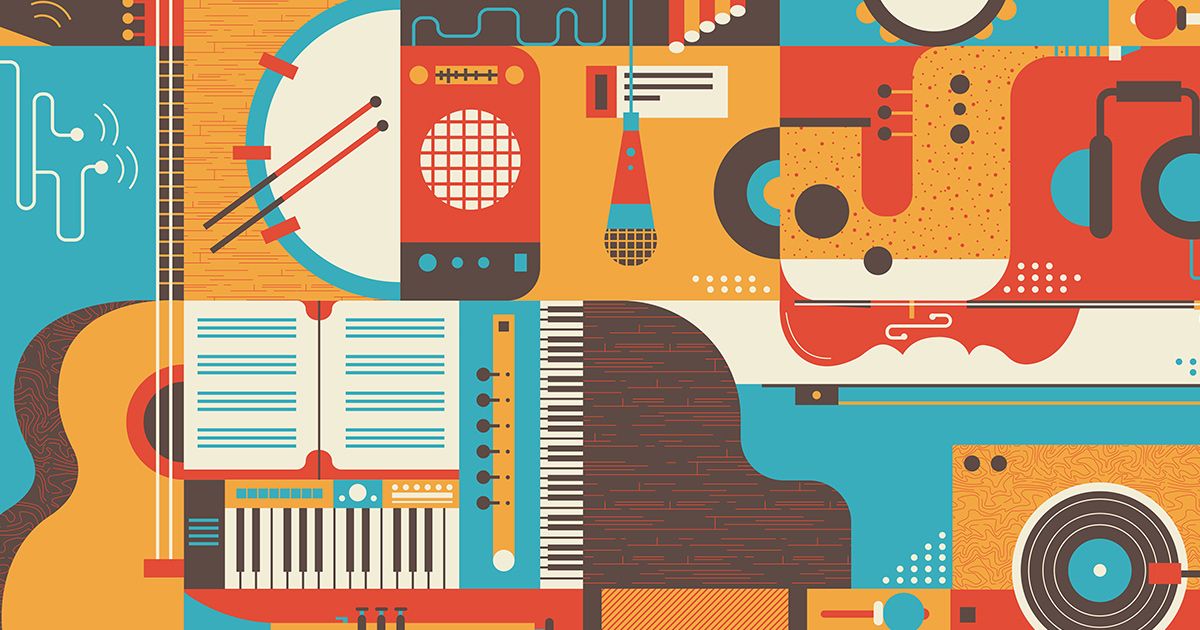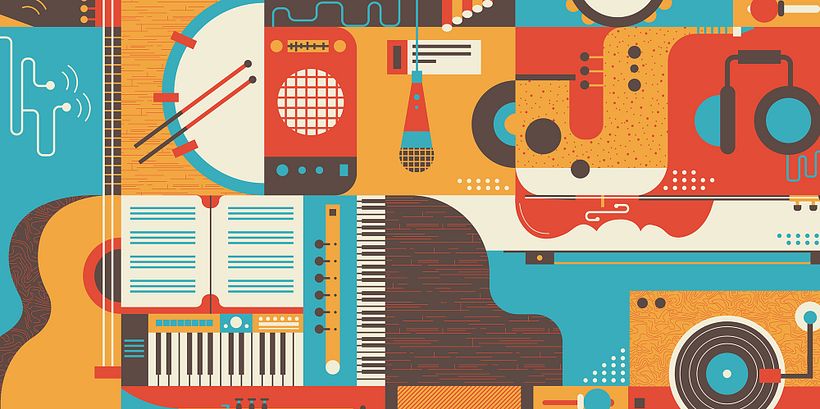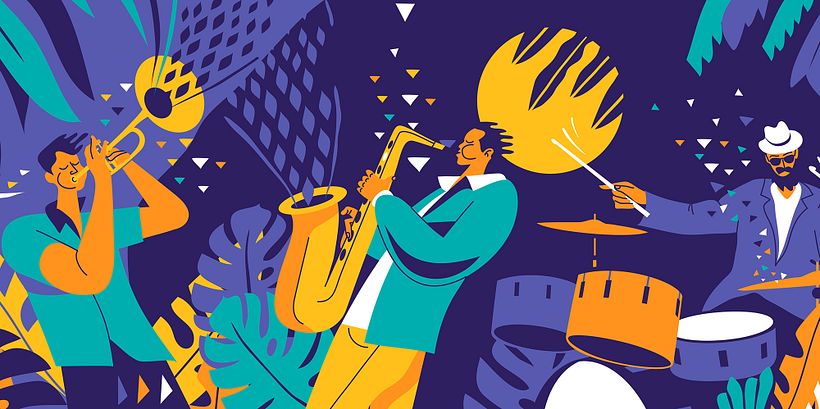What Is Musical Composition? Fundamentals, Elements, and Techniques

Explore the fascinating process of musical composition, from selecting the rhythm to creating harmonies.

A musical composition is the creation and organization of sounds and silences to convey emotions and express ideas. The fundamentals of a musical composition include the basic elements of sound, such as pitch, rhythm, harmony, melody, and form.
Fundamentals and elements of musical composition
When working on a musical composition, we must take into account certain elements and make certain decisions:
- Rhythm selection: rhythm organizes sounds in time and is fundamental to structure a composition. It establishes a pulsation that marks the succession of sounds.
- Versification: involves organizing the text or lyrics in the melody, creating a coherent structure of phrases and stanzas. The choice of words affects the musical expression.
- Melody: is the succession of sounds or notes that form a musical line, being the main and recognizable part of the work. Its structure and development are key to the attraction of the composition.
- Rhythmic: refers to the handling of accents and rhythmic patterns, the percussive aspect that gives life to the music. The right rhythm can generate emotions and convey intentions.
- Harmony: the combination of simultaneous sounds that complement the melody. It adds color and depth to the composition by combining different chords and keys.
- Oral transmission: fundamental in the interpretation of compositions, it allows music to be preserved, adapted and interpreted in a unique way in diverse contexts and cultures.
- Dynamics: Dynamics refers to the variations in the intensity of the melody and rhythm. It is the element that allows a piece of music to have moments of greater or lesser volume, creating contrasts and evoking different emotions. Dynamics are indicated by terms such as piano (soft) and forte (loud), among others.
- Texture: refers to how the different voices and instruments are combined and related in a piece of music. It can be dense or light, simple or complex. Texture adds density and richness to the sound, creating different layers and planes of sound.

Types of Musical Compositions
- Monophonic music: A composition with a single melody without accompaniment or harmony. Example: Gregorian chant, with voices following a melody in one key.
- Accompanied melody: A main melody that is supported by harmonies or chords. Example: Mozart's piano concerto, where the piano carries the melody and the orchestra provides chords.
- Polyphonic music: A composition with multiple interwoven melodies. Example: Spem in alium, by Thomas Tallis, with different voices singing different melodies simultaneously.
- Song: A musical composition that includes lyrics and melody. Example: Imagine, by John Lennon, combining lyrics with a recognizable melody.
- Instrumental music: Composed only of sounds of instruments, without lyrics. Example: Clair de Lune, by Claude Debussy, played only with piano.
Mediums in Musical Composition
There are different mediums of musical composition that can be used to write and perform music creatively and expressively. These mediums include the voice, objects, and instruments.
- Use of the voice: The voice conveys emotions and stories in music. Techniques such as falsetto or vibrato and recording vocal layers create unique harmonies and textures.
- Objects as a musical medium: record sounds from nature or use everyday objects to create rhythms and percussion. For example, the sound of wind, water, cans, or spoons can be used to create original sound effects and rhythms.
- Musical instruments: each instrument brings its own timbre and technique, essential for melodies and accompaniments. Their diversity makes it possible to create harmonies and add color to the composition.

Music Composition Techniques
In musical composition, there are several techniques that allow the creation of melodic pieces with a certain mood and style.
- The melody: The central element in a composition, it is the main and memorable musical line that the listener remembers and sings.
- Mood of the melody: Fundamental for expressing specific emotions. It can be varied by changes in key, dynamics, or instrumentation.
- Accompanying technique: Consists of the harmony or rhythm that supports the melody, performed with instruments, chords or orchestral arrangements.
- Influence of digital media: With technological evolution, tools such as recording and music production software facilitate experimentation with styles and rhythms.
- Stylization in composition: the process of giving a unique identity to the work through the combination of melodies, rhythms, harmonies, and arrangements.
Each of these aspects contributes to the richness and diversity in the world of music composition, allowing artists to uniquely express their ideas and emotions.
Music composition is a fascinating art that combines rhythm, melody, and technology. To deepen your skills in this field, explore this music theory and composition course and transform your ideas into stunning works.
If you want to learn more, join one of our courses:
- Learn about music with our courses
- What is Lo-Fi music?
- Create Lo-Fi Beats with Ableton Live and Push Course





0 comments